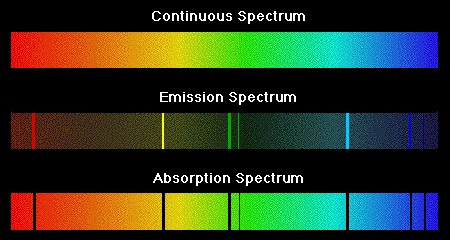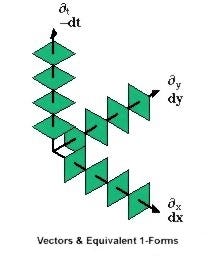Quantum Perceptions
Please hold your applause.
This just in from Oxford.
This immediately suggests that perception is likely more than simply the binding of molecules to receptors. This is where the additional depth that quantum mechanics could provide comes in.
https://oxsci.org/the-quantum-pursuit-to-perceive/
As to all that, see: “Are Perceptual Fields Quantum Fields?”
Let’s move the discussion from smell to vision, where we encounter parallel issues. Those who are familiar with my ramblings can safely skip what follows — a traditional approach in any case.
The processes on the retina produce excitations which are conducted to the brain in the optic nerves, maybe in the form of electric currents. Even here we are still in the real sphere. But between the physical processes which are released in the terminal organ of the nervous conductors in the central brain and the image which thereupon appears to the perceiving subject, there gapes a hiatus, an abyss which no realistic conception of the world can span. It is the transition from the world of being to the world of appearing image or of consciousness.
~Weyl
This is wonderfully lucid. Notice that Weyl contrasts the world of being with the world of consciousness, tacitly invoking the usual dualism of mind and body. Einstein had something to say about that.
In contrast to psychology, physics treats only of sense experiences and of the 'understanding' of their connection. But even the concept of the 'real external world' of everyday thinking rests exclusively on sense impressions.
~Einstein
The first point I’d like to make is that the “physical world” and “physics” are constructs whereby we try to make sense of the regularities of sense impressions. This project has been so successful that many otherwise learned persons are given to assign a higher reality to the construct than to what we directly perceive. Thus Weyl talks about a transition from the “world of being to the world of appearing image or of consciousness.”
Schrödinger put his finger on the essential difficulty.
So it is better to ask the naive but very pertinent question right away: how do red and yellow, sweet and hot come in at all? Once we have removed them from our "objective reality," we are at a desperate loss to restore them. We cannot remove them entirely, because they are there, we cannot argue them away. So we have to give them a living space, and we invent a new realm for them, the mind, saying that this is where they are, and forgetting the earlier part of the story—all that we have been talking about till now — is also in the mind and nowhere else. But deeming it to be something else — objective reality — we run against the unanswerable question: how does matter act on mind, to produce in it the sensory qualities — and also how does mind act on matter, to move it at will? These questions cannot, so I believe, be answered in this form, and they owe their embarrassing form precisely to our having posited an objective reality which is a pure geometrical scheme of thought and deprived of everything real given by experience.
How to resolve this problem? Lockwood and I, following Bertrand Russell, arrived at a similar picture, independently of one another.*
Take some range of phenomenal qualities. Assume that these qualities can be arranged according to some abstract n-dimensional space, in a way that is faithful to their perceived similarities and degrees of similarity — just as, according to Land, it is possible to arrange the phenomenal colors in his three-dimensional color solid. Then my Russellian proposal is that there exists, within the brain, some physical system, the states of which can be arranged in some n-dimensional state space ... And the two states are to be equated with each other: the phenomenal qualities are identical with the states of the corresponding physical system. (Emphasis added.)
Chalmers also alludes to this view.
We can also find information embodied in conscious experience. The pattern of color patches in a visual field, for example, can be seen as analogous to that of pixels covering a display screen. Intriguingly, it turns out that we find the same information states embodied in conscious experience and in underlying physical processes in the brain. The three-dimensional encoding of color spaces, for example, suggests that the information state in a color experience correspond directly to an information state in the brain. We might even regard the two states as distinct aspects of a single information state, which is simultaneously embodied in both physical processing and conscious experience.
Feigl started out as a physicist before turning to philosophy.
The solution that appears most plausible to me, and that is consistent with a thoroughgoing naturalism, is an identity theory of the mental and the physical, as follows: Certain neurophysiological terms denote (refer to) the very same events that are also denoted (referred to) by certain phenomenal terms. [...] I take these referents to be the immediately experienced qualities, or their configurations in the various phenomenal fields.
~Feigl
How to move from philosophy to physics? Helmholtz provided the essential clue: “Similar light produces, under like conditions, a like sensation of color.”
We can both broaden and tighten this observation today, and say that the same state vector, acted upon by the same operator(s), produces the same spectrum of colors and sounds and so forth.
I emphasized spectrum just now because, as the mathematician Steen reminds us, early on in 20th-century physics, “The mathematical machinery of QM became that of spectral analysis.”
James Arthur tells us about spectral theory.
Harmonic analysis in the broadest sense refers to a general principle in mathematics that links geometric objects with spectral objects. The two kinds of phenomena are sometimes related by explicit formulae, sometimes by parallel mathematical theories and sometimes by laws of physics. The principle seems to be a profound aspect of the inner structure of mathematics, of which sound is but one special case.
Light is another kind of spectral phenomenon. It comes in different colors, or wavelengths,** which we can observe by passing sunlight through a prism. We speak of the spectrum of light, or more generally of the electromagnetic spectrum, to mean the range of possible wavelengths. This is the scientific origin of the term spectral. One can devise physical experiments with radiation in which the physical or geometric properties of the equipment govern the wavelengths of the radiation that is produced.
~Arthur
Even brilliant mathematicians conflate color with wavelength (or its inverse, frequency), following what “everybody knows.” Weyl did so, early on, before he saw the light. Can we do better?
The laws of electromagnetic field theory as expressed by James Clerk Maxwell in the mid 1800’s required dozens of equations. Vector analysis offered a more convenient tool for working with EM theory than earlier methods. Tensor analysis is in turn more concise and general, but is too abstract to give students a conceptual understanding of EM theory. Weyl and Poincaré expressed Maxwell’s laws using differential forms early this century. Applied to electromagnetics, differential forms combine much of the generality of tensors with the simplicity and concreteness of vectors.
~Warnick, Selfridge, & Arnold
Well, wavelengths are… lengths, and therefore scalars, whereas colors behave like vectors.
And vectors are dual to differential forms.
And simple forms have the dimensions of area.
And what we see are colored areas.
In the case of the Poynting vector, we have a dual area corresponding to the energy flow of electromagnetic radiation. Knowing the energy (E) gives us the frequency (v), by E = hv. We can then look up the appropriate entry in the CIE, e.g., to find the corresponding color. A higher flux thru the dual area gives us a brighter color — or a louder sound, in the case of audition.
E = hv takes us to the heart of quantum theory.
The magical formula E = hv from which the whole of quantum theory is developed, establishes a universal relationship between the frequency v of an oscillatory process and the energy E associated with such a process. The quantum of action h is one of the universal constants of nature.
~Weyl
*Private communication.





